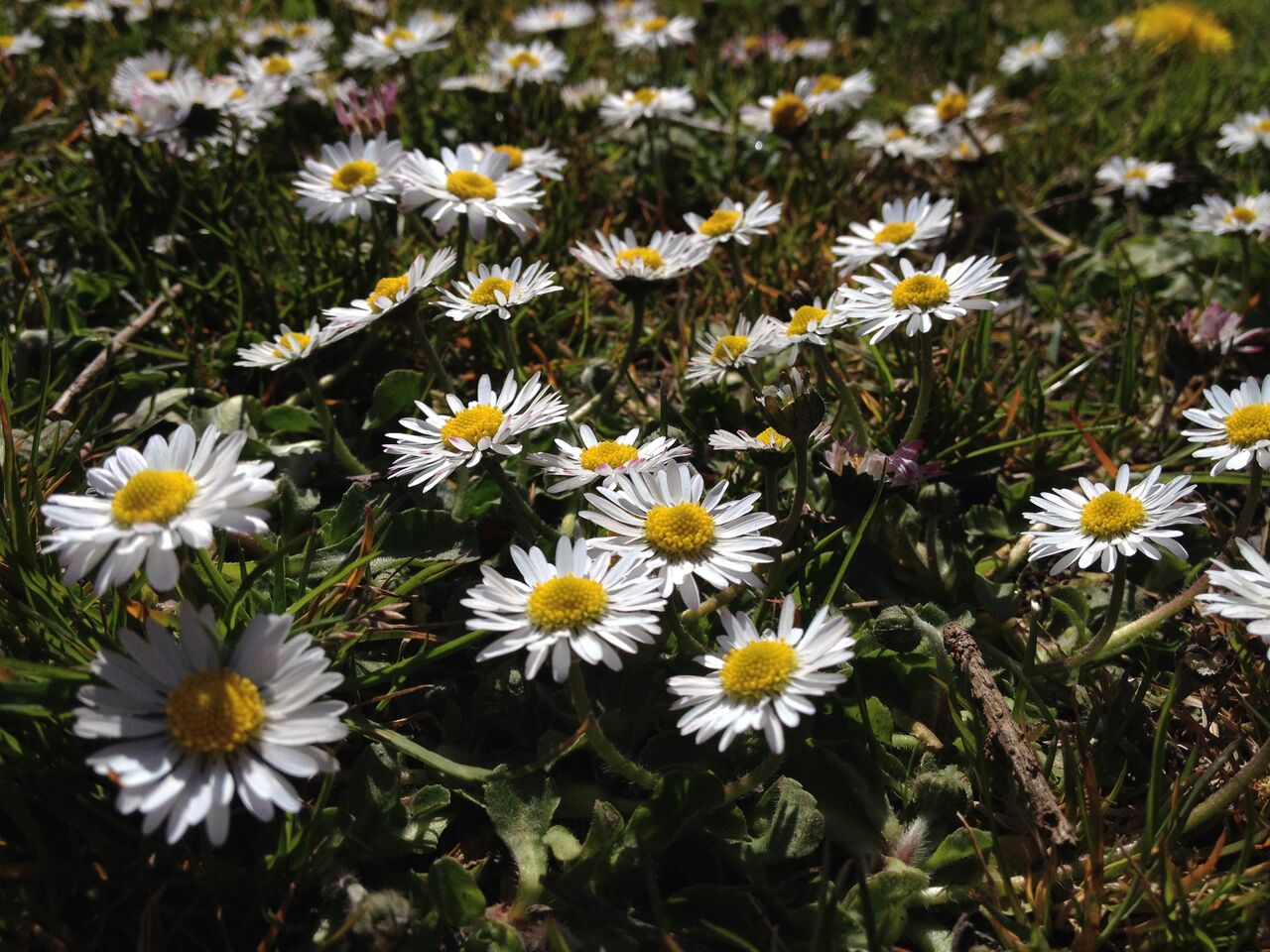
I recognise them – they are Daisies! These plants jostle with the Dandelions to fill my lawn – I have a slight preference for the Daisy.
Plantlife says it’s OK to pick a few Daisies now and again – good for them! It’s a long time since I made a daisy-chain – it’s time I did so again. How about it? Will readers of this blog commit to making a daisy chain this summer – just to show your softer side? Go on! I will. It’s the daisy-chain challenge.
I’d love to see Philip Hammond introduce his budget with these words:
Daisies are our silver,
Buttercups our gold:
This is all the treasure
We can have or hold.
Raindrops are our diamonds
And the morning dew;
While for shining sapphires
We’ve the speedwell blue.
These shall be our emeralds
Leaves so new and green;
Roses make the reddest
Rubies ever seen.
God, who gave these treasures
To your children small,
Teach us how to love them
And grow like them all.
Make us bright as silver:
Make us good as gold;
Warm as summer roses
Let our hearts unfold.
Gay as leaves in April,
Clear as drops of dew
God, who made the speedwell,
Keep us true to you.
[registration_form]
The daisy features in a John Clare protest poem (in Weeds by Richard Mabey, p124) on the loss of wild flowers due to the enclosure of common land around his home in Northants in 1821:
There once were springs, where daisies’ silver studs
Like sheets of snow of every pasture spread;
There once were summers where crow flowers bud
Like golden sunbeams brightest lustre shed;
….
The brook’s no more – kingcup and daisy fled;
Their last fall’n tree the naked moors bewail,
And scarce a bush is left to tell the mournful tale.
The likes of Hammond would have been very familiar to Clare.
Richard Mabey goes on to mention John Clare’s descriptions of children’s games using wild flowers to make posies and create fantasy picnics and gardens.
There — in hard times, over 200 years ago – soft sides to a tough, wiry kid.
Sadly, I don’t think Spreadsheet Phil’s calculations assign much value to the pleasures of seeing wild flowers and butterflies, listening to bird song or feeling the rain on your face.
He doesn’t get out much
Sounds like a wonderful plan.
Count me in.
Picture to follow on Twitter.
We need a # to start a trend & get people engaged.
I love seeing a daisy strewn lawn, I don’t know why people go to such extremes to get rid of them?
Random22 – I agree.
A lawn without daisies is like a night sky without stars. I have never understood the obsessional need for a dull, manicured lawn – and people are proud of them!
Agree and nice thought, Sandra.
And also new to me just now – but probably not to many others is this:
Daisy is simply Day’s Eye (O.E., daeges eage ) and alludes to the fact that the flower covers its yellow disk in the evening and reveals it each morning.
Audrey Hatfield in her book, How to Enjoy Your Weeds, quotes Chaucer’s great love for daises:
“That blissful sighte softeneth al my sowre.”